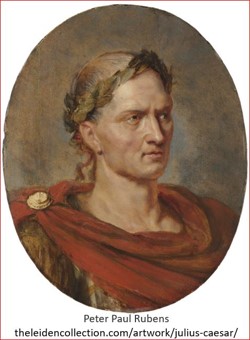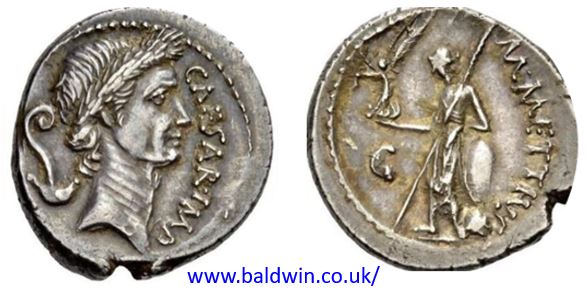
Gaius Julius Caesar’s (100BC – 44BC) calendar reform began only 45 years before AD1. It is worth analysing the circumstances of Caesar’s calendar reform because the new calendar was based on precise astronomical principles and has stood the test of time.
The historians and calendar experts agree that Julius Caesar introduced the new solar Julian calendar on 1 January 45BC.
Caesar was not only the dictator of the Roman Republic.

He was also Pontifex Maximus, the chief high priest officer of the Roman priesthood, so he was the Lord of Time in the empire.
Caesar’s new calendar was based on the Egyptian model and was developed on the knowledge and suggestions of the ancient Greek astronomer Sosigenes of Alexandria.

At the time of Caesar’s calendar reform, the Egyptian civil calendar had already been a solar calendar with a year length of 365 days for a very long time (2300 years, according to the majority opinion, since Pepi II; VI dynasty; according to other views about 5000 years).
In the solar civil calendar year, there were 12 months, equally 30 days long and an additional short period, 12*30+5=365 days. For example, in this calendar, the date of the vernal equinox VEQ or any other astronomical date was advanced by one day every four years until it circled the whole year.
However, the calendar of the Egyptian priest-astronomers contained 360+5 days three years long and 360+6 days in the fourth year. After 1461 civil years and 1460 priestly years (Sothis cycle, a total of 533265 days), the two Egyptian calendars “converged”, and this “meeting” was celebrated with a large public festival.
The priestly calendar was astronomically much more accurate than the civil calendar and served as a model for Caesar’s Julian calendar.
In the new Julian calendar of Caesar, the length of the standard years (365 days) and the length of the leap years (366 days) were controlled by the “size” of the month February, like today.
Accordingly, the old Egyptian priestly calendar and the new Julian calendar were equally accurate, with an average year length of 365.25 days.
Because of their simple, predictable, reliable, and fixed nature, the Egyptian and Julian calendars (except for the first 52 years of the Julian calendar, the period of uncertain leap years, see below) are easily convertible. The Julian and Egyptian calendars can be formally well synchronised even into the centuries before 45 BC. The Julian calendar allows dates to be accurately calculated back (retrospective feature), even centuries before Caesar’s time. This also applies to forward-looking (prospective) calculations into the future.
Centuries after the Julian calendar was introduced, it did not yet have a calendar year in the modern sense of AD years.
